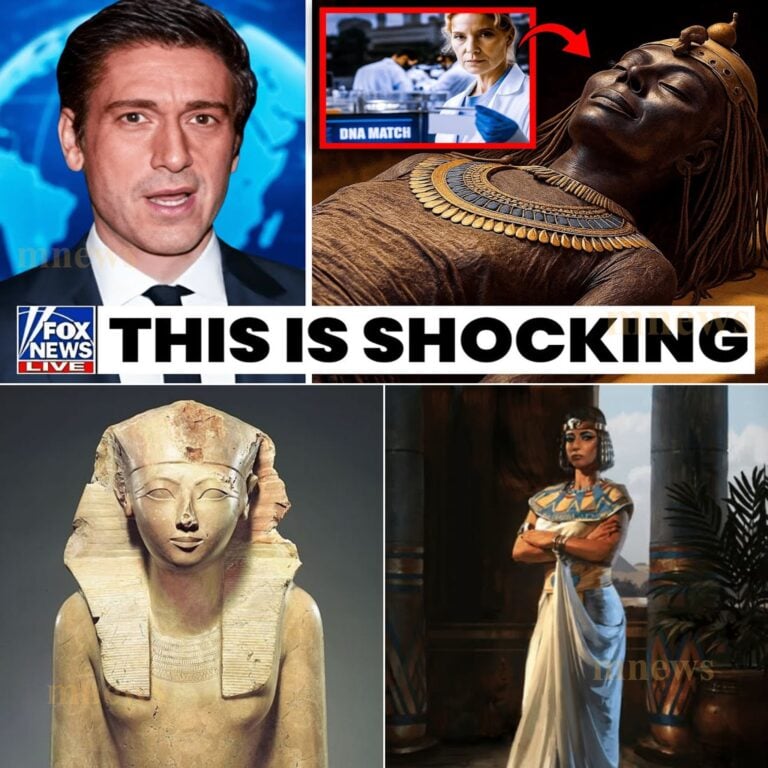What was meant to be a routine confirmation of royal lineage has turned into one of the most shocking and controversial discoveries in the history of Egyptology — a revelation that could rewrite the origins of an entire civilization.

In a discovery that has shattered the boundaries of archaeology and genetics, scientists examining the preserved remains of Queen Hatshepsut, Egypt’s most enigmatic female pharaoh, have uncovered DNA evidence that defies all known history.
What began as an effort to confirm her royal heritage has led to a revelation so disturbing that Egyptian authorities reportedly tried to suppress the findings. According to leaked lab documents from Cairo’s Supreme Council of Antiquities, Hatshepsut’s genetic markers show no full match with any known human lineage — ancient or modern. Instead, her mitochondrial DNA reveals mutations never seen before in human or primate genomes, suggesting ancestry from a population that may have predated known civilization — or originated beyond it.
Dr. Layla Nasir, a geneticist involved in the study, described the moment of discovery:
“The sample didn’t make sense. It wasn’t just ancient — it was otherworldly. We thought it was contamination at first. But it repeated across multiple tests. Hatshepsut’s DNA doesn’t belong to the pharaohs we know — it belongs to something older.”
/shethepeople/media/media_files/0uuN4diq5fKoemJz6YNN.png)
Even more chilling, chemical analysis of her mummification oils revealed microscopic crystalline fragments of a compound not found anywhere else on Earth. Early spectroscopy readings have drawn parallels to rare meteoritic elements, leading some to speculate that her lineage may trace back to a forgotten civilization influenced by extraterrestrial contact.
And the mystery deepens further. A second set of bone samples, extracted from Hatshepsut’s thigh and spine, showed evidence of rapid cellular mutation — the kind consistent with exposure to high radiation levels or experimental compounds. This finding has led to whispers within Egyptological circles that Hatshepsut may not have died from illness, as long believed, but from deliberate poisoning — or an ancient attempt to silence her.
Her personal artifacts only add to the intrigue. Among them, a small alabaster jar labeled with the hieroglyph “The Breath of the Stars” was found containing residue matching the carcinogenic substance detected in her body. Could this “sacred cosmetic” have been a ritual elixir — or something far more dangerous?

A recently decoded inscription in her mortuary temple now takes on an unsettling new meaning:
“I come from those who walked before the Nile.”
Historians once thought this a poetic phrase — now, some are asking if it was a confession.
The implications are staggering. If these findings are true, Hatshepsut’s reign may not have been the beginning of a dynasty — but the end of one far older, erased from history.
As the Egyptian government tightens access to the mummy and halts further testing, researchers claim that a digital copy of the DNA results was leaked online, fueling theories of a royal bloodline that stretches beyond the known world.





